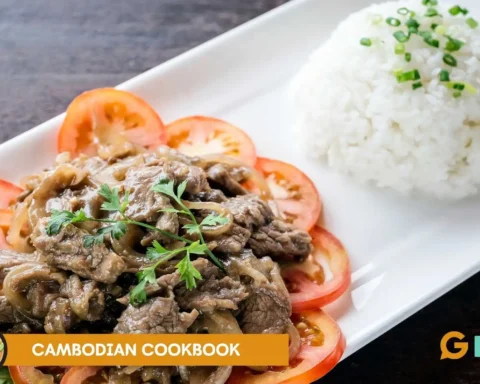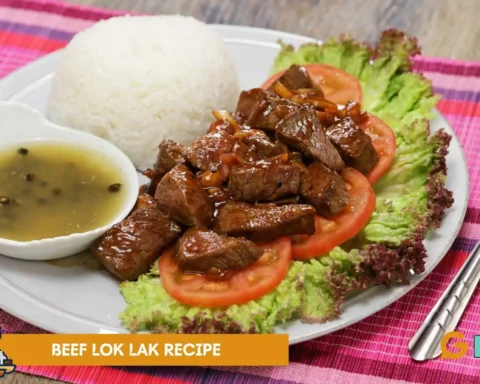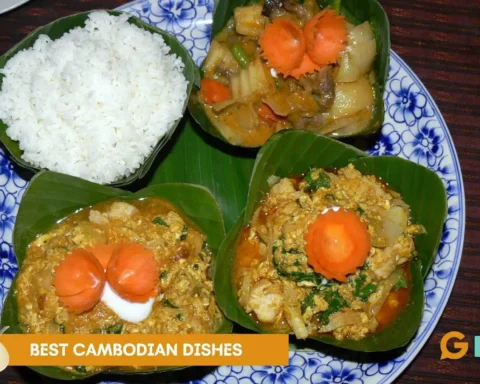Cambodian New Year, or Chaul Chnam Thmey, is the Khmer’s most important national holiday to commemorate. The festival takes place in mid-April, based on the lunar calendar when the harvest season turns into the rainy season. Central to the festival is the festive display of Cambodian New Year food, which brings colorfully alive the Khmer culture, religious beliefs, and traditional practices deeply ingrained in the nation.
Table of Contents
The Cultural Importance of Cambodian New Year Food
The rich variety of Cambodian New Year’s food goes beyond subsistence; it is a festivity of appreciation of agricultural abundance and religious revitalization in society. For three days- Moha Sangkran, Leung Sakk, and Chol Chnam Thmey, Cambodian people celebrate with vibrant celebrations punctuated with religious rituals and social feasts. The preparation of traditional cuisine and the tradition of presenting food to monks indicate the supreme value placed on merit-making in this predominantly Buddhist society.
Traditional Recipes as Symbols of Cambodian Culture
The New Year table features traditional dishes like fish curry scented with fragrance, coconut sweets, and sweet sticky rice sweets. The sticky rice cake, or “num ansom,” covered in banana leaves and served with pork, beans, or bananas, is typical. Grated coconut, enriched with coconut milk, tops them and represents the cultural pride inherent in the Khmer people. Each meal embodies Cambodia’s rich heritage and underscores its attachment to the rhythm of the harvest season.
Food, Family, and Festival Rituals
During Chaul Chnam Thmey public holidays, the time for families consolidate social cohesion with communal meals. Leaving lots of food on the table to share with the neighbours and relatives reflects the host culture of Cambodian society. Temples are lively hubs where temple offerings such as sticky rice cake and seasonal fruits are presented. Scented water cleansing ceremonies try to wash away people of negative energy and bless them for the new year.

Moha Sangkran and the Focus on Freshness
According to the traditional horoscope, the start of the biggest holidays and community events during Moha Sangkran marks the coming of a new protector angel. Foods served include fresh fruits, steamed rice, and grated coconut, representing a commitment to locally grown produce. Such foods focus on religious ceremonies and the rich history of Cambodia while encouraging sustainable agriculture for Cambodians.
Regarding cookery heritage, traditional games like Bos Angkunh and Chol Chhoung are vital in cementing the group. Such games using simple instruments like bamboo sticks help engender a celebratory spirit through joyous celebrations and camaraderie. These popular games represent the grander ethic of lively cultures, combining food, play, and group ecstasy and delivering an unforgettable experience.
Cultural Performances and the Flavour of Street Food
There are street performances of Chaul Chnam Thmey cultures, with vendors selling street foods along the road, where one can experience a variety of delicacies. Fried delicacies, desserts with sticky rice, and spicy fish curry with flavours of fish sauce are an aromatic introduction to the culture of Cambodians. The cultural celebrations are a tourist experience and a memorable sojourn in the nation’s rich culture.
New Year mornings are spent making offerings at temples. Families provide traditional food and sweets flavoured with coconut milk, emphasizing the deep relationship between sustenance and spirituality in Buddhism. This standard period spent together by families creates reflection and respect, strengthening community bonds through religious observance.
Angkor Sangkrant: A Contemporary Revival of Cultural Traditions
In Siem Reap, the Angkor Sangkrant festival reinstates old traditions with modern vigour. Against the backdrop of the ancient Angkor Wat temples, the festival offers days of festivities with a mountain of sand sculpture art, sacred water blessings, and presentations of cultural elegance. Gastronomic customs are still included in these celebrations, combining Cambodia’s poignant history with the vibrancy of new expressions.
Seasonal rhythms also strongly influence Cambodian cuisine. As the seasons change from dry to wet, foods honoured at New Year mark the conclusion of the harvesting season and the return to productivity. This merging with the cycle of nature reflects the natural attractiveness and serene landscape that constitute Cambodia’s heritage and traditional celebrations.
Conclusion
Some part of the Cambodian New Year food is a deep, soul-searching inquiry into the heart of a lovely nation of rich tradition. From the fragrant smell of sticky rice dessert to the celebratory spirit of coconut-rich dishes, from the lively atmosphere of traditional games such as Chol Chhoung and Bos Angkunh, the festival is a living picture of Cambodia’s permanent virtues. By engaging in religious rituals, enjoying street foods, and marvelling at the breathtaking vistas surrounding Angkor Wat, locals and foreigners alike are part of an infectious celebration that jubilantly reveals the Khmers’ cultural heritage and unyielding willpower. The Cambodian New Year food is a memorable experience and an enlightening travel journey into an immensely fascinating culture.

FAQs
What do Cambodians eat for New Year’s?
Cambodian people celebrate Khmer New Year with foods such as amok trey (fish curry), nom banh chok (rice noodle soup), kralan (sticky rice in bamboo tube), and plenty of tropical fruits.
How do I prepare for the Khmer New Year?
Before the Khmer New Year, individuals clean their homes, go to temples to seek blessings, offer food to ancestors, and stock up on water for battles, old-fashioned games, and family reunions.
What is Cambodian traditional food?
Cambodian traditional food includes fresh herbs, rice, grilled meat, and fermented flavours, and favourite dishes like samlor korko (stirring soup), bai sach chrouk (pork and rice), and amok (steamed coconut fish curry).









